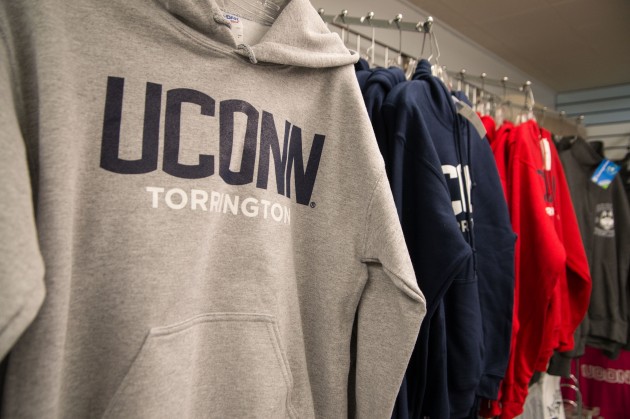For 17-year-old Katie Wallace, the decision to start her college career at UConn Torrington was practically a no-brainer. The reasonable cost, small classes, and proximity to her home all appealed to her, she says.
Wallace is one of 1,400 freshmen entering UConn’s five regional campuses, at Avery Point, Hartford, Waterbury, Stamford, and Torrington. This fall, about 4,900 of UConn’s nearly 22,700 undergraduates are spread among the regional campuses.
For many students, enrolling at a regional campus is a convenient way to pursue a degree while balancing life’s responsibilities.
“It’s about access and affordability, but the quality never changes,” says William Pizzuto, the director of the Waterbury and Torrington campuses. “That’s the key. It’s UConn quality across the board.”

Wallace was a model student at Torrington High School: she was active in the marching band, chamber choir, and jazz band; successful in honors and AP courses; and graduated 16th in her class of 242. She says being close to her parents and doctors is important because she is dealing with some health issues.
Additionally, living at home will allow her to continue volunteering with a local animal rescue organization, for which her family has fostered dogs for 12 years. She says she’s looking forward to pursuing her academic interests in chemistry and business in small classes, where she can get to know the faculty.
“I don’t know what I want to do yet,” Wallace says. “It’s a small enough campus that if I do decide to transfer, I’ll get a good recommendation from my teachers because I’ll actually know them.”
Unlike Wallace, Samir Lulic of Hartford didn’t initially set out to attend a regional campus. But since being accepted to UConn Hartford, he says he is thankful for the opportunity to transition to college life at his own pace.
“The idea of having a big campus, such as the one at Storrs, is kind of nerve-wracking,” Lulic says. “For the first two years, I’ll feel better at a smaller campus. You can have more of a connection with the teachers.”

Lulic knows what that’s like. He says one of his teachers at Bulkeley High School in particular, Justin Taylor, pushed him to achieve throughout his high school career.
For instance, Taylor encouraged Lulic – who hated public speaking – to join the moot court team at Bulkeley. At first, Lulic was enticed by a free trip to Washington, D.C. for the Marshall-Brennan Constitutional Literacy Project National High School Moot Court Competition.
Then he realized he was really good at it.
“I was better than I thought I was,” Lulic says. He beat about 60 students in the first round of the competition, advancing to the semi-finals.
“I never thought of being a lawyer or an advocate, but doing moot court kind of opened my eyes,” says Lulic, who immigrated to the U.S. from Bosnia when he was 4. “Maybe sometime in the future I’ll look into law school.”
With close ties to their local communities and a variety of organizations, clubs, and programs, UConn’s regional campuses encourage students to pursue their interests, says Pizzuto, the UConn Waterbury and Torrington director.
“The quality and rigor is there,” he says, “but also, the outreach and engagement they provide.”
The regional campuses have become destination schools for some because of their unique focuses. For example, students flock to UConn Hartford to study social work and public policy, to Stamford for international business, to Torrington to immerse themselves in arts and culture, and to Avery Point to conduct marine research.
Students can choose a program that can be completed at the regional campus, or they can start coursework for any of UConn’s 100-plus majors, finishing their degree at Storrs.
Lulic, who recently had an op-ed published in the Hartford Courant, plans to pursue a communication degree.
“I’ve always loved to write. It’s always been an important part of my life,” he says. “Being able to write about issues that are super important, and telling a story through your writing, is something I would love to pursue.
“I can’t wait to start,” he adds. “I’m excited for new experiences.”



